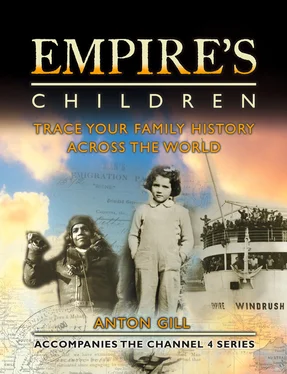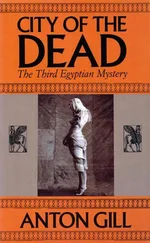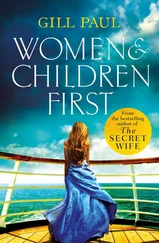Louis Rigg, Diana’s father, was born in Doncaster in 1903. He followed in the footsteps of his father, who was also a railway engineer. Diana went to see historian John Scott Morgan at the National Railway Museum. Records show that Louis’s father had spent £100 (nearly six months’ wages in those days) on securing him a premium apprenticeship with the designer of the Flying Scotsman , Nigel Gresley. Such an impressive placement would normally have guaranteed him a job, but just as he was completing it in 1922 the government made the decision to rationalize the number of railway franchises from 122 to just four. Louis decided to look elsewhere for opportunities, to the British Empire. In 1925 he answered an advertisement in The Times , calling for railway engineers to work in India.
India, like many of the colonies, appealed to the British working classes because it offered the sort of lifestyle that someone like Louis could never have enjoyed in Britain. But the change in environment and culture was vast, and many Britons found it difficult to adjust. Once in India, Diana’s first destination was the city of Bikaner on the edge of the Thar Desert, Louis’s first posting. Travelling on the railway that her father helped build, she can see symbols of the imperial legacy everywhere. Railways were built by the British all over the Empire, and were of vital importance to the infrastructure of the region. They are also one of the most important legacies of the Raj. Today 8,000 trains carry 12 million passengers daily over 75,000 kilometres of track.
As a young, unmarried man, James worked at ‘the end of the line’ where conditions were tough. The front of the track construction was far away from civilization. Temperatures rose as high as 50 °C and the jungle harboured deadly wildlife. Diseases such as typhoid and cholera were also rife. Unusually, Louis did not work for a British employer, but for the Indian Maharajah (King) of Bikaner, Ganga Singh. Bikaner was one of the 500 princely states that was still ruled by its own king rather than directly by the British. In return for swearing allegiance to the crown the Maharajahs were allowed to continue raising taxes and governing all the internal affairs of their states. Ganga Singh was an extraordinary character. His feared camel corps fought in both world wars and, as ADC to King George V, he was present at the signing of the Treaty of Versailles. Far from the stereotypical decadent raja who spent his time kowtowing to the British, he was a benevolent despot who not only built railways and canals to bring water to his desert state but also made education free for all his subjects.
In Bikaner, Diana went to meet Shri Lal Nathamal Joshi, who worked with Louis on the railway. Many of the newly arrived ‘sahibs’ quickly developed a reputation for high-handed treatment of their staff but it seems Louis broke this mould. Diana learned that her father is fondly remembered as a man who, far from lording it over the locals, worked with them as equals. His contribution to the local area is remembered with gratitude and appreciation. When Louis left Bikaner in 1943, all the staff gathered together to bid him farewell and Joshi wrote a special poem in honour of the occasion.
By 1929, four years after moving to India, Louis decided it was time to get married. He was given six months’ leave and returned home to Britain to seek his bride. He met twenty-one year-old Beryl Halliwell at the local Doncaster tennis club, and it was love at first sight. They were engaged almost immediately, but it took almost three years before Louis was able to persuade Beryl to make the six-week voyage to India. The couple were married in Bombay. Diana visited their first house, where she grew up, speculating how her mother would have tried to make it look as English as possible. She discovered from reading letters that her mother wrote home, that they were blissfully happy on their honeymoon.
Life for a newly arrived bride in imperial India could be socially daunting. Beryl, the small-town girl from provincial England, had five servants to carry out every household task, and the comfortable bungalow the couple lived in was a far cry from Doncaster. Beryl faced other challenges, socializing with the most senior officials of the British Empire as well as Indian royalty. Diana visited one of the maharajah’s private residences, where her parents would have been entertained, and was able to marvel at the opulence and luxury that they must have enjoyed. The Indian women were not so lucky. They were forbidden to socialize with men and were kept in ‘purdah’, only allowed to gaze down at the parties from balconies above.
THE RIGG FAMILY WERE ALSO REGULAR GUESTS AT THE MAHARAJAH’S LAKESIDE HUNTING LODGE AT GAJNER, ABOUT THIRTY MILES WEST OF BIKANER.
The Rigg family were also regular guests at the Maharajah’s lakeside hunting lodge at Gajner, about thirty miles west of Bikaner, another place that Diana visited. Louis’s rank in the social order became apparent at such gatherings. One of Beryl’s letters home provides a vivid description of one such hunt:
We didn’t go into the butts with the men, I wanted to but H.H. [His Highness]said it was too hot for us, so we watched from the lakeside An aide de camp or someone fired the first shot. That was to make the birds rise from the lake. It was extraordinary the way they all rose in a cloud when that shot was fired. Then H.H. fired the first one after the birds had risen, then all the men started. There were about 10 men shooting and they got 570 birds… H.H. himself got 170 birds but then he had 3 guns and 3 loaders so all he had to do was shoot …
Despite being a crack shot Louis, whose social status consigned him to a position at the end of the firing line, only bagged 3 birds that day.
When Diana was born in 1938, her brother Hugh was already four years old. Their mother kept a strict eye on them, making sure they did not stay in the sun too long and that they avoided local food. She was right to be cautious. Mortality among expats was high, and still higher in the local population. Even so, the imported tinned food from England was, Diana remembered, ‘disgusting!’
In 1943 the Rigg family moved to the neighbouring state of Jodhpur. Louis Rigg accepted the post of Chief Mechanical Engineer – the highest posting he could ever hope for – to the Maharajah of Jodhpur. He was now in charge of some 3,000 staff and more than 100 locomotives. The equivalent position in Britain usually attracted a knighthood. The family’s new home was commensurately grand, so large that today it is divided into four family flats. Maharajah Umaid Singh was another dynamic personality, a keen aviator who had opened the first airport in Rajasthan. He also had a 347-room palace built, still the largest private residence in the world.
Unfortunately, the good fortune did not last long. In 1944 Gandhi was released after being imprisoned for establishing the Quit India campaign in 1942. A year later the Second World War ended and pressure for independence was growing. Isolated bomb attacks began to occur, especially focused on disrupting the infrastructure, particularly the railways. Many expats believed that the time had come for them to leave. Louis Rigg took this view in August 1945 when he sent his family home on the SS Mahonada.
Конец ознакомительного фрагмента.
Текст предоставлен ООО «ЛитРес».
Прочитайте эту книгу целиком, купив полную легальную версию на ЛитРес.
Безопасно оплатить книгу можно банковской картой Visa, MasterCard, Maestro, со счета мобильного телефона, с платежного терминала, в салоне МТС или Связной, через PayPal, WebMoney, Яндекс.Деньги, QIWI Кошелек, бонусными картами или другим удобным Вам способом.












